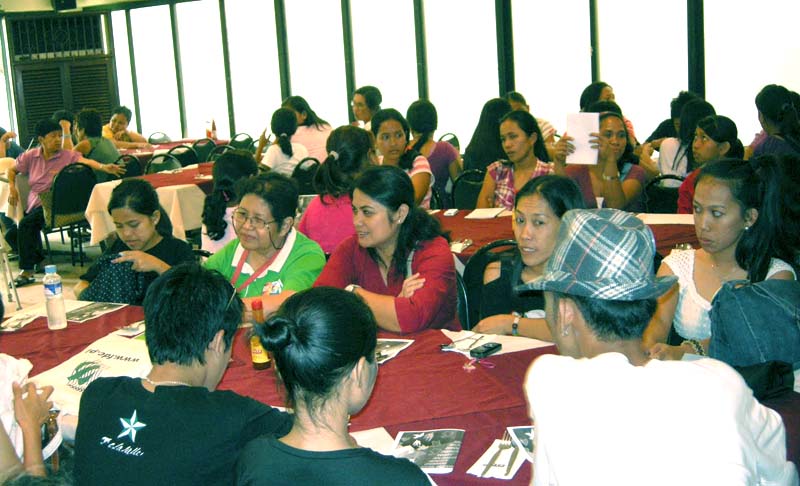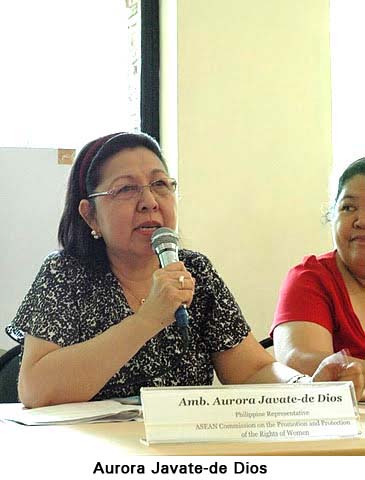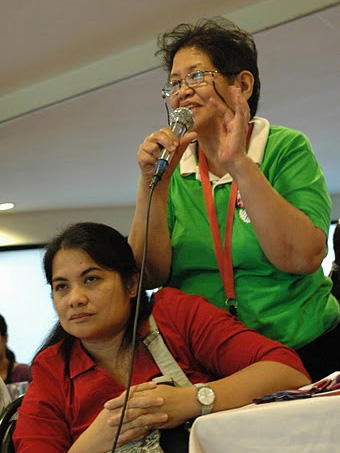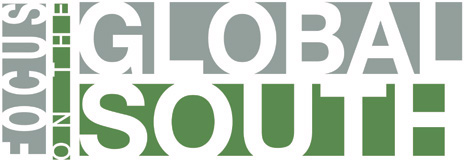
By Mary Ann Manahan – 30 March 2011

These stories of poverty and crisis as encountered by women are the highlights of the State of the Filipino Women project, now dubbed “Stories of and by Women in the Midst of Multiple Crises,” which was launched on March 24, 2011 by Focus and co-member organizations of the network Welga ng Kababaihan (women's strike). This report is mainly about how Filipino women, especially from the basic sectors, live and breathe the crisis.
As the rural women in Nueva Ecija puts it, “madaming problema, 'di lang sa pangkabuhayan, bagyo, tapos shortage ng tubig. Sa mga pananim walang maani dahil sa kakulangan ng tubig, halos palit binhi lang. Sa gulay hindi maganda ang ani.” (There are many problems not only in livelihood and as a result of typhoons; there's the water shortage. Because of water scarcity, crop harvest, such as vegetables, is not good).
This insecurity in livelihood resonates with the women workers of the export processing zone in Cavite who shared “Ipit talaga, kaya nauuwi sa utang” (The situation is critical so that the only option is to borrow money). The crisis has become so pervasive that for a young worker in Caloocan, she is the crisis - “ako yata ang krisis, sa buhay ko ngayon… Her parents had made her stop schooling so she could find a job and help earn for the family; the other option was for her to leave home because she was already considered a burden. Imbibing the crisis reflects the 'culture of crisis' felt by women in their daily lives so that the multiple crises and burdens have become embedded in women's psyche.
During the launch, which also served as forum for discussing gender and poverty, women from north and central Luzon provinces, who came to share experiences, affirmed the stories in the report by recounting similar ordeals they were facing.

The women in a fishing community in Cavite have become 'creative' and resourceful in finding jobs and earning extra money for the family. They have multiple jobs-from selling foodstuffs to doing laundry and domestic work for other households. This is the same story of women migrants when they have ended their contracts abroad and are now back in the country.
These accounts of survival show that women have hopes and dreams of getting out of poverty and crisis, not only for themselves, their families but for the rest of the country. They are women in action, who have demands and calls for a comprehensive, clear and concrete agenda and program to get them out of poverty. The women's accounts in the report have also emphasized that women make choices in a whole array of relevant social, political and economic matters, based on their own perceptions and calculations, and within received parameters of experience, information and existing institutions and structures. For organized women, these choices have potential strategic implications. And even during times of crises, women continue to organize, claim their rights as well as spaces for their struggles to get out of poverty. Women's movements are struggling to end all forms of oppression.
The collective voices of women in the report serve as challenge to everyone — women and men — involved in the struggle for equality, justice and equity.
In the forum-launch too were government officials, Secretary Joel Rocamora (National Anti-Poverty Commission), Deputy Director Lorenza Umali (Philippine Commission on Women) and Ambassador Aurora Javate-De Dios (Philippine Representative to the Asean Commission for the Promotion of the Rights of Women). As reactors, they all expressed appreciation for the effort that went into producing the report and for its contribution to the continuing study of gender and poverty; they also gave recommendations on how to strengthen the report.
PHOTO ESSAY: of the launch “Women in Crisis, Women who Struggle, Women with Hope” at
 Focus Philippines
Focus Philippines
 Home | Aims and Objectives of Solidarity Philippines Australia Network | About Kasama
Home | Aims and Objectives of Solidarity Philippines Australia Network | About Kasama 
Search the SPAN Web